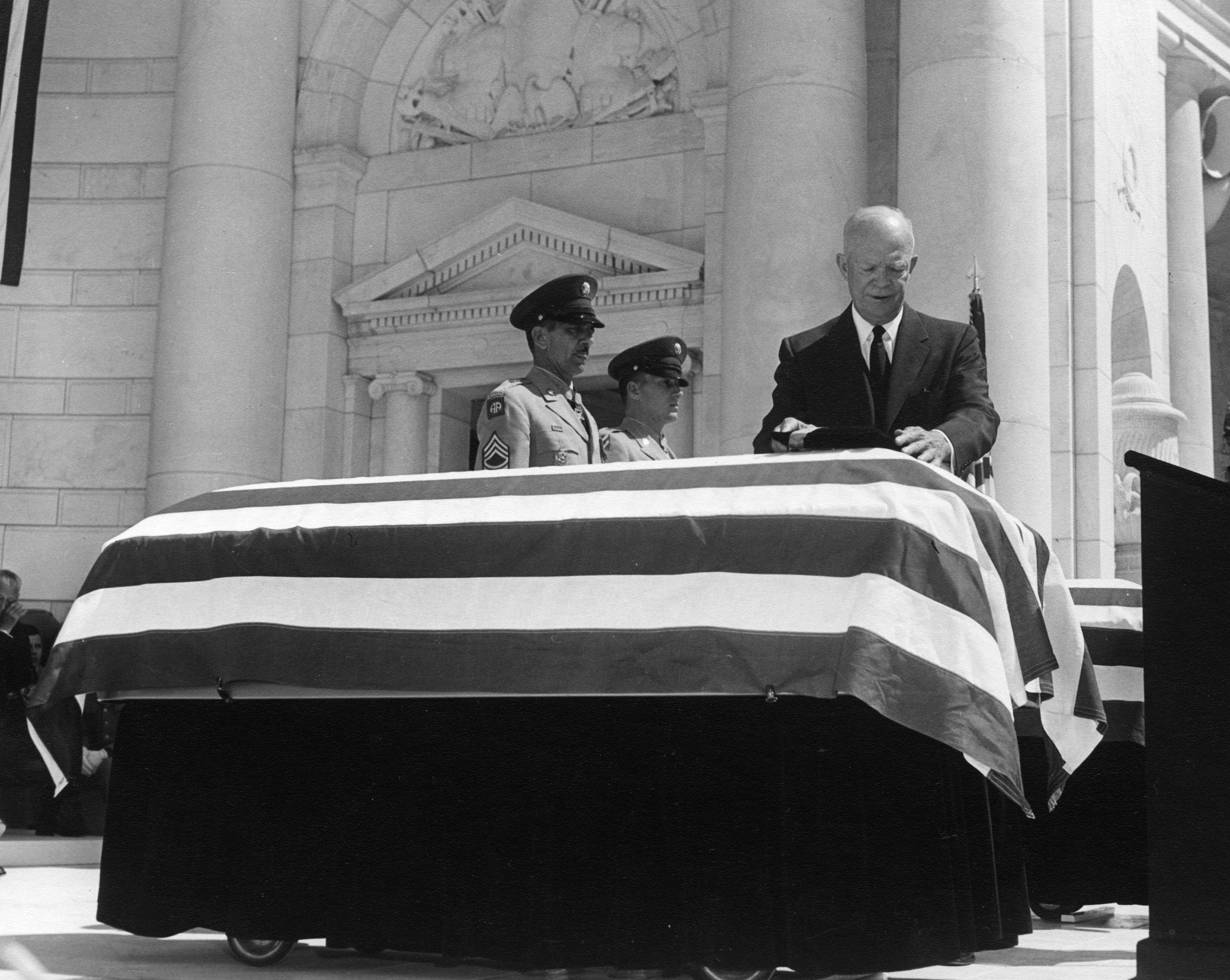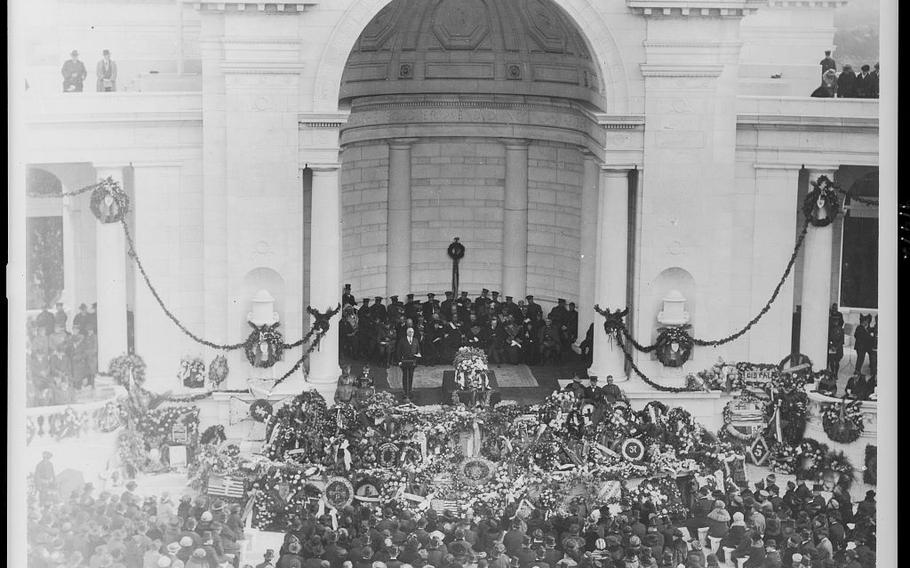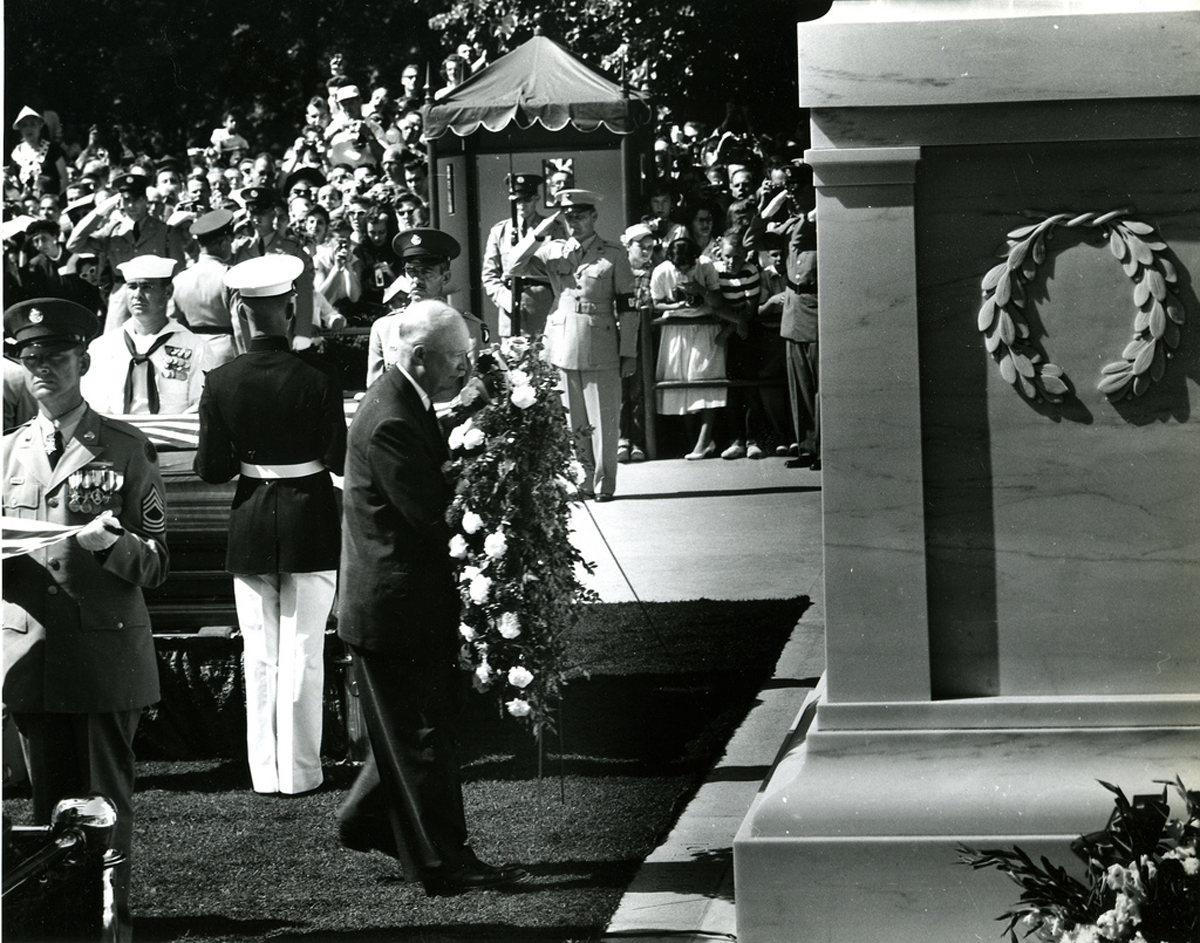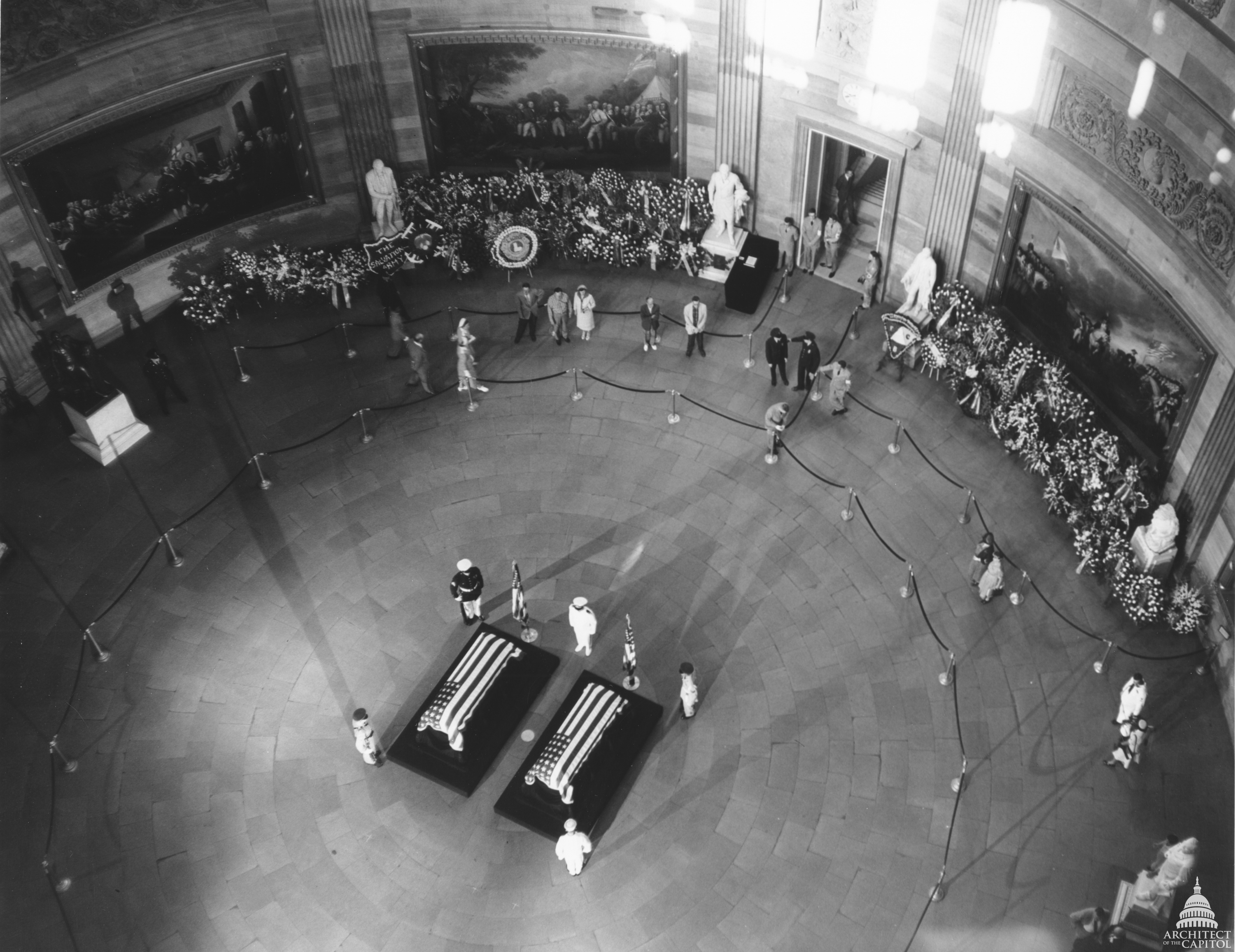 President Eisenhower placing Medals of Honor on caskets of Unknowns from World War II and Korean War, Memorial Amphitheater, Arlington National Cemetery (Courtesy of National Archives)
President Eisenhower placing Medals of Honor on caskets of Unknowns from World War II and Korean War, Memorial Amphitheater, Arlington National Cemetery (Courtesy of National Archives)
“Time will not dim the glory of their deeds.”
--General John Pershing
100 years ago, on November 11, 1921, a horse-drawn caisson made its way through Arlington National Cemetery. Inside the caisson rested the remains of an American soldier whose name and identity would never be known. He was a casualty of the Great War, one of hundreds of thousands who gave his life on the Western Front during 1918.
Drawing inspiration from the French and the British, in late 1920 the United States established a special tomb in Arlington National Cemetery for one unknown soldier whose burial was to represent all unknown servicemen. After a nearly year-long, extremely detailed process to ensure the honored soldier was truly unknown, the remains of the selected soldier were brought home to the United States. On November 9 and 10, the Unknown lay in state in the U.S. Capitol Rotunda. On November 11, following a procession through Washington, D.C. and Arlington Cemetery, the Unknown was laid to rest in the newly created Tomb of the Unknown Soldier on Armistice Day, commemorating the end of the First World War. President Warren G. Harding laid the Medal of Honor on the casket and presided over a state funeral for the honored soldier. Across the country, Americans observed a two-minute moment of silence out of respect for the fallen.

President Warren G. Harding at Arlington National Cemetery, 1921 (Courtesy of Library of Congress)
In the years since, the Tomb of the Unknown has become one of the most revered places in America. Guards were added to maintain the honor and sanctity of the place, with 24 hours a day, 7 days a week protection beginning in 1937. As the years passed and American history changed and grew, so too did the Tomb of the Unknown.
President Eisenhower played an honored role in the expansion of this hallowed ground. In 1956, Eisenhower signed legislation expanding the Tomb of the Unknown to include servicemen from World War II and Korea. The process of selecting these unknown dead was more elaborate, especially considering the truly global scale of World War II. Out of what was originally 18 unidentified bodies from multiple theaters of World War II, one each from the European and Pacific Theaters were selected for final consideration. After being rearranged to prevent any identification or knowledge of where they were from, Hospital Corpsman 1st Class William R. Charette—a Medal of Honor recipient from Korea—made the final selection aboard the USS Canberra off the coast of Virginia on May 26, 1958.
Several days later, the caskets of the World War II and Korean War Unknowns arrived in Washington to lay in state in the Capitol Rotunda. On May 30—Memorial Day—a ceremonial procession brought the Unknowns to Arlington, where President Eisenhower and Vice President Richard Nixon presided over their interment.
Before they were laid to rest, Eisenhower bestowed upon each the Medal of Honor. As he laid the medals on the caskets, Eisenhower’s face represented the feelings of so many—solemnity, reverence, and respect for what each Unknown had done, and for the larger sacrifices of thousands more that they represented with their inclusion in the Tomb of the Unknown.

President Eisenhower Lays A Wreath At The Tomb of the Unknown Soldier (Courtesy of Old Guard Museum)
In 1984, a Vietnam War Unknown was added to the Tomb. However, due to advances in the ability to identify remains of unknown soldiers from Vietnam, the remains placed in the Tomb were ultimately determined to be those of Air Force 1st Lt. Michael Blassie. Shot down during a mission in 1972, Blassie’s remains were exhumed and reinterred at the Jefferson Barracks National Cemetery in St. Louis in 1998. The Vietnam crypt at the Tomb of the Unknown remains empty today as a tribute to all U.S. service members from Vietnam who remain missing.
Today—100 years after the burial of America’s World War I Unknown—the Tomb of the Unknown reminds us of all those who have sacrificed so much, known and unknown. The staff of the Eisenhower National Historic Site is honored to join in the remembrance of this solemn occasion, and the small role which President Eisenhower played in it.

The Remains of Unknown Soldiers Lie In State in the U.S. Capitol Rotunda, May 30, 1958 (Courtesy of the Architect of the Capitol)
|
November 09, 2021
|
Last updated: November 9, 2021
